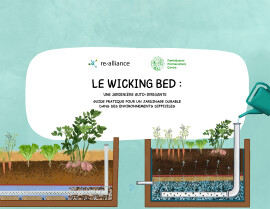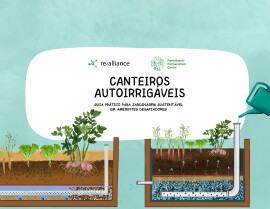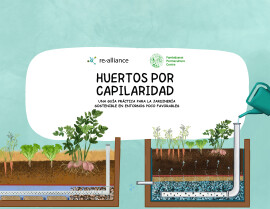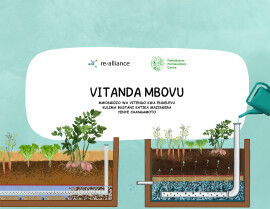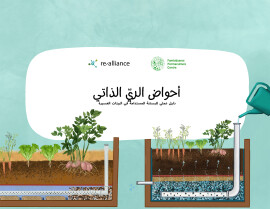
Nutrition Matters
People, food and famine
The classic disaster model of an emergency, which assumes simple cause and effect between food shortages, malnutrition and death, no longer holds. The nature and perceptions of emergencies are changing. In fact most emergency situations are protracted, with obvious political dimensions, and the great majority of crises can be predicted and often recur in the same area and. With appropriate interventions, the progress of famine can be halted. This book is based on the authors' views and experiences as fieldworkers in situations of food insecurity and famine, combined with their in-depth knowledge of the discipline of nutrition. They develop a new conceptual framework of the role of nutrition in famine which can be used to analyse the underlying causes of malnutrition, the stage of famine, and the risk of disease and death. This is useful as a basis for nutritional assessments, for identifying appropriate intervention, and targeting strategies. Practical suggestions for carrying out assessments and for alternative interventions are given. The institutional and political change needed for the successful implementation of appropriate interventions is also considered.
Published: 1995
Pages: 168
eBook: 9781780445595
Paperback: 9781853392436
| ACKNOWLEDGEMENTS Vlll | |||
|---|---|---|---|
| ABBREVIATIONS X | |||
| INTRODUCTION xi | |||
| PART 1 Nutrition and famine: contemporary views | |||
| and practice 1 | |||
| 1 Understanding famine and malnutrition 3 | |||
| Current views on famine 3 | |||
| A guided tour of malnutrition 9 | |||
| Famine, malnutrition and death 19 | |||
| 2 Nutritional surveillance for famine early warning 25 | |||
| Introduction 25 | |||
| Nutritional surveillance 26 | |||
| Information systems for monitoring famine 32 | |||
| Can we predict famines from monitoring nutritional status? 35 | |||
| 3 Methods of nutritional assessment and surveys 42 | |||
| Introduction 42 | |||
| Anthropometric methods 43 | |||
| Qualitative approaches to gathering information 54 | |||
| Combining qualitative and quantitative methods of | |||
| gathering information 58 | |||
| Community participation in nutritional surveillance 59 | |||
| PART 2 Nutrition in action: a case-study of Darfur 61 | |||
| 4 Famine in Darfur 1984-5 63 | |||
| Introduction 63 | |||
| Why is Darfur vulnerable to famine? 64 | |||
| Drought culminates in famine, 1984-5 68 | |||
| Institutional response to the 1984-5 famine 72 | |||
| Role of nutrition information - from shortage to excess 75 | |||
| Use of nutrition data, 1984-6 77 | |||
| 5 After the famine — a shift in approach 80 | |||
| Introduction 80 | |||
| The development of an early warning system in Darfur, 1987-90 81 | |||
| New approaches to nutritional surveillance 84 | |||
| Trends in nutrition and food security: 1987-90 88 | |||
| Why did nutrition fail to improve? 99 | |||
| Discoveries about malnutrition, wealth and food security 100 | |||
| PART 3 Nutrition and famine: the way forward 103 | |||
| 6 A new way of looking at nutrition in famine 105 | |||
| Introduction 105 | |||
| The purpose of the model 105 | |||
| The practical application of the model 111 | |||
| 7 Community surveillance — lessons for the future 124 | |||
| Introduction 124 | |||
| The strengths of community-based surveillance 125 | |||
| The limitations of community-based surveillance 127 | |||
| North Darfur after 1990 130 | |||
| 8 A role for nutrition — practical or pointless? 133 | |||
| Appendix: An overview of the nutritional surveillance | |||
| methods used in North Darfur 1988-91 137 | |||
| References 142 | |||
| Index 149 |
Helen Young
Helen Young leads the Darfur Livelihoods Programme at the ODI, which combines research, capacity development and institutional change. As a Research Fellow at the Overseas Development Institute, in Sussex, she reviewed nutritional assessment and response to situations of food insecurity and famine.
Ethnic Minority Poverty in Vietnam
Baulch, Bob
(2010)
https://doi.org/10.2139/ssrn.1719672 [Citations: 9]The Promise of a Community-Based Approach to Managing Severe Malnutrition: A Case Study from Ethiopia
Chaiken, Miriam S.
Deconinck, Hedwig
Degefie, Tedbabe
Food and Nutrition Bulletin, Vol. 27 (2006), Iss. 2 P.95
https://doi.org/10.1177/156482650602700201 [Citations: 17]Smallholder farmers in the Great Ruaha River sub-Basin of Tanzania: coping or adapting to rainfall variability?
Pauline, Noah M.
Vogel, Coleen
Grab, Stefan
Liwenga, Emma T.
Climate and Development, Vol. 9 (2017), Iss. 3 P.217
https://doi.org/10.1080/17565529.2016.1184607 [Citations: 26]Aquaculture role in global food security with nutritional value: a review
Pradeepkiran, Jangampalli Adi
Translational Animal Science, Vol. 3 (2019), Iss. 2 P.903
https://doi.org/10.1093/tas/txz012 [Citations: 168]Managing the Risks of Extreme Events and Disasters to Advance Climate Change Adaptation
Toward a Sustainable and Resilient Future
O'Brien, Karen
Pelling, Mark
Patwardhan, Anand
Hallegatte, Stephane
Maskrey, Andrew
Oki, Taikan
Oswald-Spring, Úrsula
Wilbanks, Thomas
Yanda, Pius Zebhe
Giupponi, Carlo
Mimura, Nobuo
Berkhout, Frans
Biggs, Reinette
Brauch, Hans Günter
Brown, Katrina
Folke, Carl
Harrington, Lisa
Kunreuther, Howard
Lacambra, Carmen
Leichenko, Robin
Mechler, Reinhard
Pahl-Wostl, Claudia
Przyluski, Valentin
Satterthwaite, David
Sperling, Frank
Sygna, Linda
Tanner, Thomas
Tschakert, Petra
Ulsrud, Kirsten
Viguié, Vincent
2012
https://doi.org/10.1017/CBO9781139177245.011 [Citations: 48]The Data Hustle: How Beneficiaries Benefit from Continual Data Collection and Humanitarian Aid Research in the Somali Region of Ethiopia
Carruth, Lauren
Medical Anthropology Quarterly, Vol. 32 (2018), Iss. 3 P.340
https://doi.org/10.1111/maq.12431 [Citations: 21]Nutrition and Care of Young Children during Emergencies
Longhurst, Richard
Food and Nutrition Bulletin, Vol. 16 (1995), Iss. 4 P.1
https://doi.org/10.1177/156482659501600414 [Citations: 5]Why do people die in famines? Evidence from three island populations.
HIONIDOU, VIOLETTA
Population Studies, Vol. 56 (2002), Iss. 1 P.65
https://doi.org/10.1080/00324720213797 [Citations: 15]Severe Acute Malnutrition and Feeding Practice of Children Aged 6-59 Months in Pastoral Community, Afar, Ethiopia: Descriptive Cross-Sectional Study
Mulaw, Getahun Fentaw
Kase, Bizunesh Fantahun
Manchilo, Adebabay Dessie
Lombebo, Bereket Lopiso
Tollosa, Begna Melkamu
International Journal of Child Health and Nutrition, Vol. 9 (2020), Iss. 4 P.156
https://doi.org/10.6000/1929-4247.2020.09.04.2 [Citations: 1]Insights from social‐ecological systems thinking for understanding and preventing famine
Fortnam, Matt
Hailey, Peter
Disasters, Vol. 48 (2024), Iss. 3
https://doi.org/10.1111/disa.12621 [Citations: 3]Malnutrition and Poverty in the Early Stages of Famine: North Darfur, 1988–90
JASPARS, SUSANNE
YOUNG, HELEN
Disasters, Vol. 19 (1995), Iss. 3 P.198
https://doi.org/10.1111/j.1467-7717.1995.tb00340.x [Citations: 8]Food-Coping Strategy Index Applied to a Community of Farm-Worker Households in South Africa
Kruger, Rozanne
Schönfeldt, Hettie Carina
Owen, Johanna Hendriena
Food and Nutrition Bulletin, Vol. 29 (2008), Iss. 1 P.3
https://doi.org/10.1177/156482650802900101 [Citations: 19]Protracted crisis, food security and the fantasy of resilience in Sudan
Jaspars, Susanne
Security Dialogue, Vol. 52 (2021), Iss. 3 P.195
https://doi.org/10.1177/0967010620927279 [Citations: 13]
